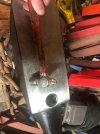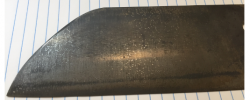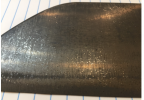Josh Rider
Stuff maker
- Joined
- Sep 2, 2014
- Messages
- 2,428
I have hammered like the videos and it worked. The way Matt is describing with the bead blaster it’s doing the same thing. It’s peening the side you’re hammering on. Spreading the metal.
So if you hammer on the inside of the banana, it will work.
Hammering on the outside may bend it back straight, if you’re lucky and don’t break it.
So if you hammer on the inside of the banana, it will work.
Hammering on the outside may bend it back straight, if you’re lucky and don’t break it.




